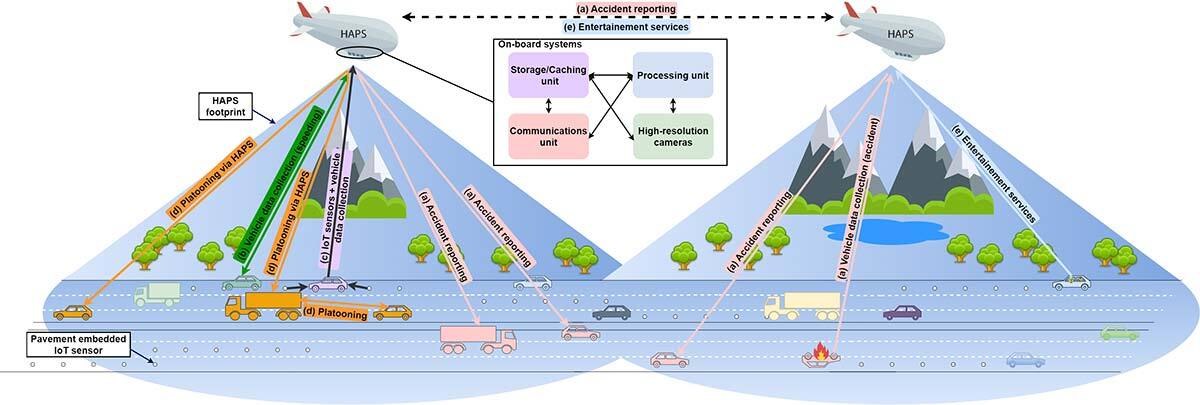
Communication networks are under increasing pressure from new applications that require ever-shorter response times. Our research aims to develop next-generation (6G) communication networks to meet these requirements, using both terrestrial and non-terrestrial facilities. We are especially interested in critical applications for public safety.
Harnessing the Skies to Extend Coverage and Services
Unfortunately, terrestrial cellular networks are not deployed everywhere—mainly for economic reasons—hence the advantage of adding high-altitude platforms (HAPS) such as balloons, drones, etc., to complement existing networks. In addition to relaying signals and messages, these communication stations can also perform calculations and process data as nodes within an integrated terrestrial and non-terrestrial edge computing architecture.

Critical Applications and Edge Computing
The deployment of non-terrestrial networks empowered by HAPS is a key enabler of mission-critical applications for public safety. An important critical application lies within the framework of intelligent transportation services (ITS) in rural areas and trans-continental highways: The aim is to track connected and autonomous vehicles (CAVs) in order to report malfunctions, incidents and/or accidents. This application would indicate the reason for the distress signal and the location of the affected vehicle, which will allow help to be dispatched by truck and/or drone rapidly.
Quality-of-service (QoS) requirements for this kind of applications include high-performance, reliability, and real-time decisions. Aiming to satisfy the QoS of public safety applications, implementing intelligent and collaborative strategies that target energy consumption minimization and efficient management of the HAPS-enabled edge computing resources is deemed necessary.

Managing Energy Consumption
The main challenge of non-terrestrial networks is the limited available energy in flying components such as HAPS. Unlike terrestrial stations, HAPS does not benefit from a continuous power supply. Its energy usage must therefore be managed efficiently.
One way of reducing the energy expenditure is to integrate reconfigurable intelligent surfaces (RISs) into the networks. These surfaces act as passive antennas, reflecting signals at a fraction of the energy consumed by their active counterparts. Their opportunistic usage, along conventional antennas, is expected to bring a significant energy consumption gain and an improvement in delivered services quality.
However, the efficient usage of multiple modes at the HAPS, with both RIS and active antennas, would require the adoption of artificial intelligence (AI)-based algorithms, which will train decision agents responsible for coupling operating modes to the required services.
A Safer World
High-altitude platforms offer the opportunity to increase the coverage of communication networks while boosting the computing power of connected objects. It’s up to us to harness their full potential to create a safer environment for tomorrow’s society


